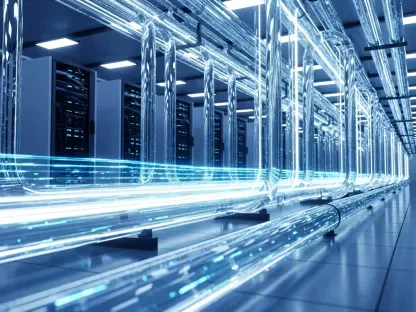The advent of AI image generators has ushered in a sea change in marketing strategies, offering unprecedented opportunities for businesses to create highly engaging visual content with minimal effort. As these tools continue to evolve and improve, they are transforming how brands conceptualize, design, and execute their marketing campaigns. This shift is characterized by the ability to produce high-quality, customized visual content quickly and cost-effectively, which has significant implications for brand visibility, engagement, and conversion rates. Marketers now have at their disposal a suite of tools that allow for rapid iteration and creative experimentation, democratizing access to cutting-edge visual content and leveling the playing field for smaller businesses. This article explores how AI image generators like Midjourney, DALL-E, and Stable Diffusion are revolutionizing marketing strategies, focusing on their key features, benefits, and legal considerations.
The Rise of Generative AI in Visual Content Creation
Generative AI technology, which creates new content from scratch rather than modifying existing material, has been a game-changer in the realm of visual content creation. Tools like Midjourney, DALL-E, and Stable Diffusion utilize sophisticated algorithms to generate high-quality images from textual descriptions, enabling marketers to produce compelling visuals without the need for advanced graphic design skills. This technology operates by interpreting text prompts and creating images that align with the given descriptions, thereby transforming abstract ideas into tangible visual content that can be used across various marketing channels.
These AI image generators are particularly valuable for their ability to produce images quickly, with Stable Diffusion often generating visuals in under 10 seconds. The rapid output allows marketers to test multiple iterations of their visual content in real time, making it easier to identify the most effective designs for their campaigns. Additionally, the customization options available in these tools, such as the ability to adjust resolution, style, and composition, ensure that the generated images align closely with brand guidelines and campaign objectives. This level of control is crucial for maintaining a consistent brand identity, which is a cornerstone of effective marketing.
Moreover, the ability to scale visual content production with AI image generators is a significant advantage. Traditional methods of creating high-quality visual content often involve hiring professional designers, which can be costly and time-consuming. In contrast, AI image generators offer a cost-effective alternative, reducing the need for large design teams while still delivering high-quality results. This scalability is particularly beneficial for small and medium-sized businesses that may have limited budgets but still need to produce a significant amount of visual content to remain competitive in today’s digital landscape.
Enhancing Creativity and Innovation in Marketing
One of the most compelling benefits of AI image generators is their ability to foster creativity and innovation in marketing strategies. These tools provide marketers with the freedom to experiment with different visual styles and concepts without the traditional constraints of time and budget. By inputting various text prompts, marketers can quickly generate a wide range of images, each with its own unique aesthetic. This capability encourages creative exploration and allows marketers to identify the most engaging visuals for their target audience, thereby enhancing the overall effectiveness of their campaigns.
Midjourney, for example, is praised for its realism and the ability to create highly detailed images that can elevate the visual appeal of marketing materials. This feature is particularly useful for creating product visuals, promotional graphics, and social media content that stand out in a crowded digital environment. The tool’s upscaling function allows users to enhance the resolution of their images, ensuring that the final output is clear and professional. This focus on detail and quality makes Midjourney an excellent choice for marketers looking to create visually stunning content that captures the attention of their audience.
DALL-E, on the other hand, is known for its ease of use and integration with the ChatGPT interface, making it accessible to marketers who may not have a technical background. The tool’s intuitive design allows users to generate images quickly by simply inputting descriptive text, which can then be refined to achieve the desired visual effect. This simplicity does not come at the expense of quality, as DALL-E is capable of producing highly detailed and realistic images. This balance of ease of use and quality makes DALL-E a valuable tool for marketers who need to produce high-quality visuals quickly and efficiently.
Legal and Ethical Considerations
While AI image generators offer numerous benefits, they also introduce legal and ethical considerations that marketers must navigate. One of the primary concerns is the issue of copyright and ownership of AI-generated images. Each platform has its own policies regarding image ownership, and these can vary significantly. For instance, Midjourney allows users to own the images they generate, with certain exceptions for upscaled images created by others and for companies earning over $1 million annually. In contrast, DALL-E users also own the images they generate, but they must adhere to OpenAI’s content policy, which outlines restrictions on what can be created using the tool.
Another critical issue is the potential for AI-generated images to infringe on existing copyrights. The algorithms used by these tools are often trained on vast datasets of existing images, which may include copyrighted material. This raises questions about the originality of the generated images and whether they might inadvertently replicate elements of copyrighted works. Marketers must be diligent in ensuring that their use of AI-generated images complies with relevant copyright laws to avoid potential legal disputes.
Ethical considerations also come into play, particularly concerning the potential for misuse of AI-generated images. For example, these tools could be used to create misleading or deceptive visuals that manipulate audience perceptions. Marketers have a responsibility to use AI image generators ethically, ensuring that the content they produce is truthful and accurately represents their brand and products. Transparency with consumers about the use of AI in creating visual content can also help build trust and credibility.
Practical Applications and Case Studies
The practical applications of AI image generators in marketing are vast, encompassing everything from social media content to large-scale advertising campaigns. These tools have been successfully integrated into various marketing strategies, demonstrating their versatility and impact. For example, a clothing brand might use AI-generated images to create lifelike representations of new product lines, allowing customers to visualize how the items would look without the need for professional photo shoots. This approach not only saves time and costs but also enables the brand to update its visual content rapidly as new products are introduced.
In another case, a real estate agency could utilize AI image generators to create stunning visuals of properties, both interiors and exteriors. By inputting detailed descriptions of the properties, the agency can generate high-quality images that capture the property’s unique features and appeal to potential buyers. This method can be particularly useful for marketing properties that are still under construction, providing a realistic preview of what the finished building will look like, thus driving interest and pre-sales.
Moreover, AI image generators can be used to create themed visual content for seasonal or event-based marketing campaigns. A retail company, for instance, might generate Halloween-themed graphics or holiday season visuals to enhance their marketing efforts during these peak periods. By using AI tools, the company can quickly produce a variety of themed images, ensuring that their marketing content is fresh, relevant, and engaging. This capability allows marketers to respond swiftly to market trends and consumer interests, maximizing the impact of their campaigns.
Future Prospects and Continuous Evolution
The future of AI image generators in marketing looks promising, with ongoing advancements driving continual improvements in their capabilities. As these tools evolve, they are likely to become even more sophisticated, offering enhanced features that further simplify the creation of high-quality visual content. Innovations such as improved AI algorithms, more extensive and diverse training datasets, and integration with other AI technologies like natural language processing could dramatically increase the realism and diversity of generated images.
Furthermore, as AI image generators become more ingrained in marketing strategies, we can expect to see greater customization options that allow for more precise control over the final output. This could include more advanced editing tools, the ability to generate images in specific artistic styles, and even the incorporation of motion graphics and video elements. Such developments would broaden the scope of what marketers can achieve with these tools, enabling more dynamic and engaging content creation.
The continuous evolution of AI image generators also highlights the need for marketers to stay informed about the latest trends and updates in this rapidly changing field. By keeping pace with technological advancements, marketers can leverage the full potential of AI tools to stay ahead of the competition. This includes understanding new features, exploring best practices for ethical and legal use, and experimenting with different applications to find the most effective strategies for their specific needs.
In conclusion, AI image generators are revolutionizing marketing strategies by providing innovative solutions for creating high-quality visual content quickly and affordably. These tools offer numerous benefits, including enhanced creativity, scalability, and efficiency, making them valuable assets for marketers looking to optimize their campaigns. However, it is essential to navigate the legal and ethical considerations associated with using AI-generated images to ensure compliance and maintain brand integrity.
As AI image generators continue to evolve, their impact on marketing strategies is likely to intensify, offering even greater opportunities for innovation and engagement. Marketers who embrace these tools and adapt to the changing landscape will be well-positioned to capitalize on the transformative potential of AI in visual content creation. By understanding the capabilities and limitations of AI image generators, marketers can make informed decisions that enhance their content strategies and drive business success in an increasingly digital world.









